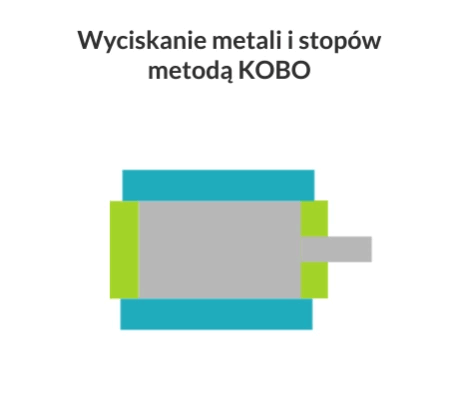The KOBO method is an unusual way of extruding metallic materials based on the phenomenon of changing the plastic deformation path. The process involves driving the tool, i.e. the die, into cyclical oscillations around its axis at a preset angle and frequency.

KOBO extrusion process
Type of technology
Development phase
Level of innovation
Scale of production
mass
Technology readiness level TRL
Description of the technology
Purpose of use
manufacturing of closed- and open-profile products
Use in industry
Alternative technologies
- conventional extrusion
Visualisation of action
Advantages
- reduced deformation
- reduced force during the extrusion process
- no need to preheat the workpiece and tool
Disadvantages
- requires special tooling
Workpiece material types
- non-ferrous metal alloys
Examples of products
- watch components
- micromachine parts
- thin needles
- microcomponents for implants
- thin wires
- microcontacts
- microcomponents for advanced aerospace systems
- microcatheters
Implementation of the technology
Required resources
- horizontal press with rotary tools
Required competences
- basic knowledge of extrusion processes
Environmental aspects
Expert evaluation
Development centers
- AGH Kraków
- Łukasiewicz – Poznań Institute of Technology
Legal conditions
- A. Korbel; W. Bochniak – Method of plastic forming of materials. U.S.(1998). Patent No 5 – 737- 959. European Patent No 737- 959
